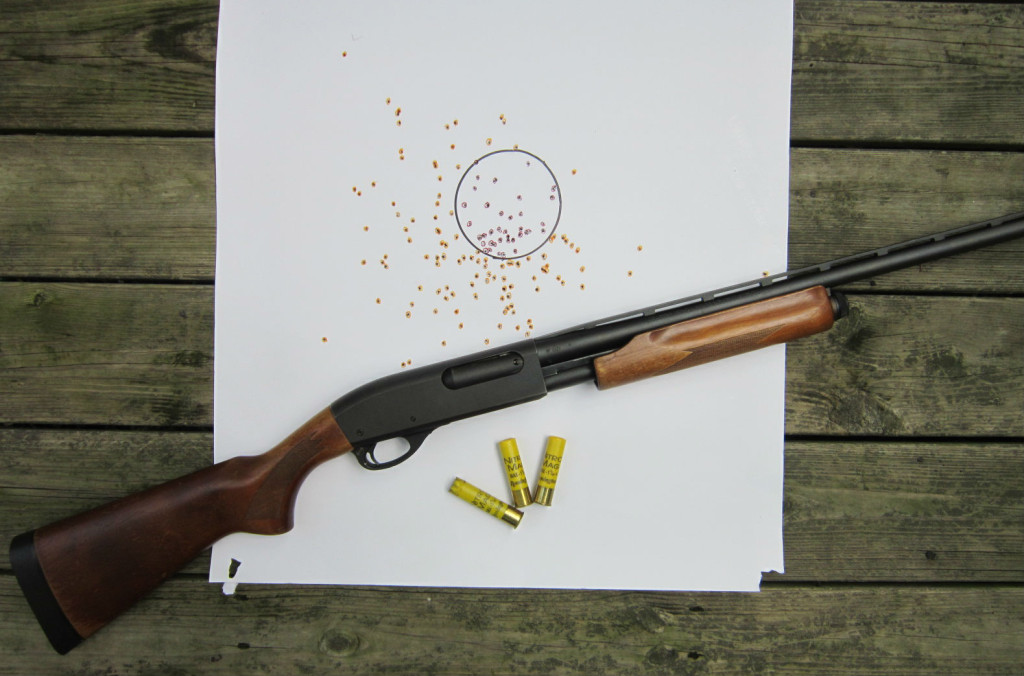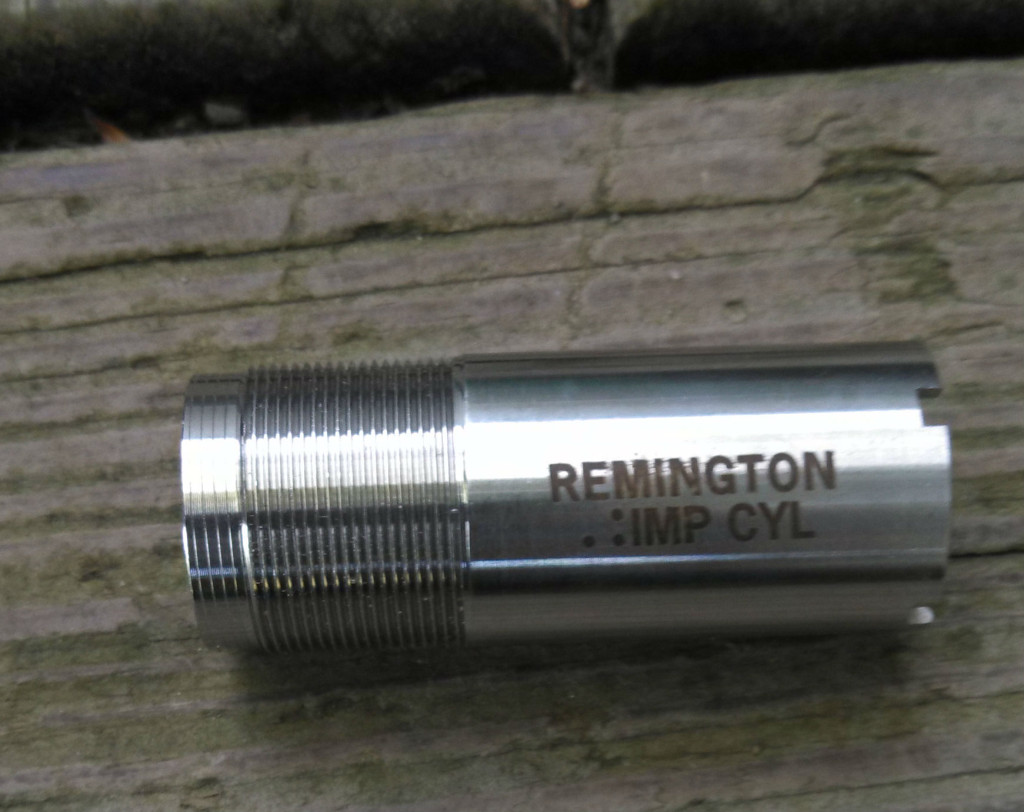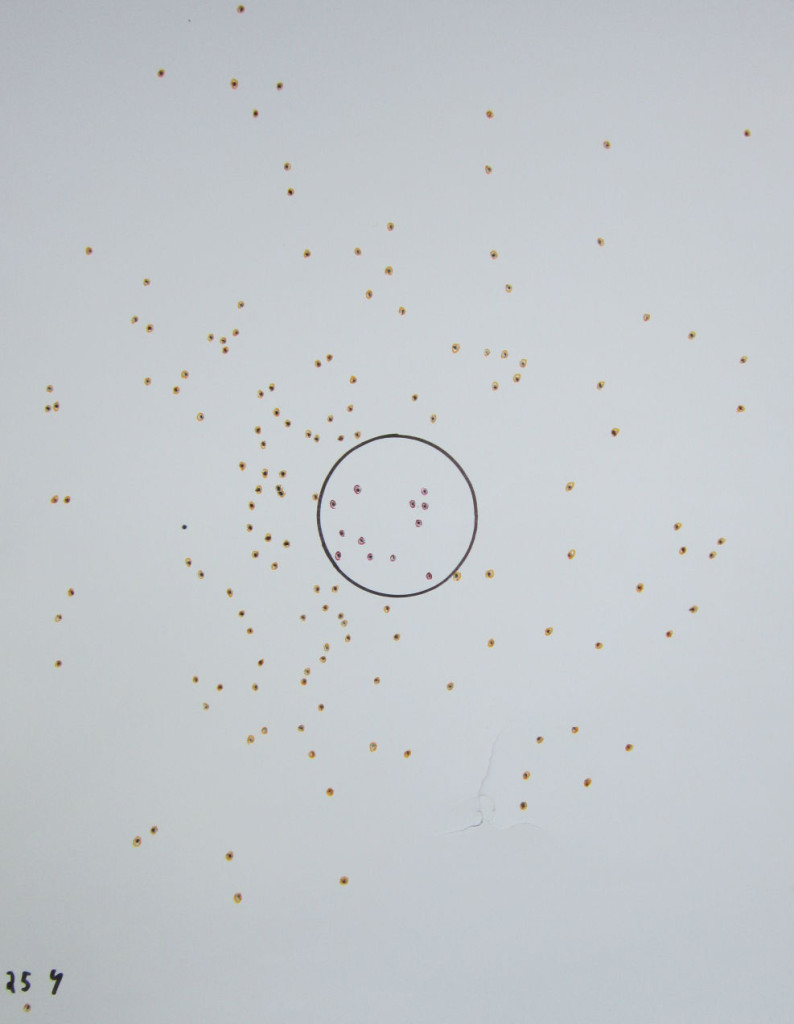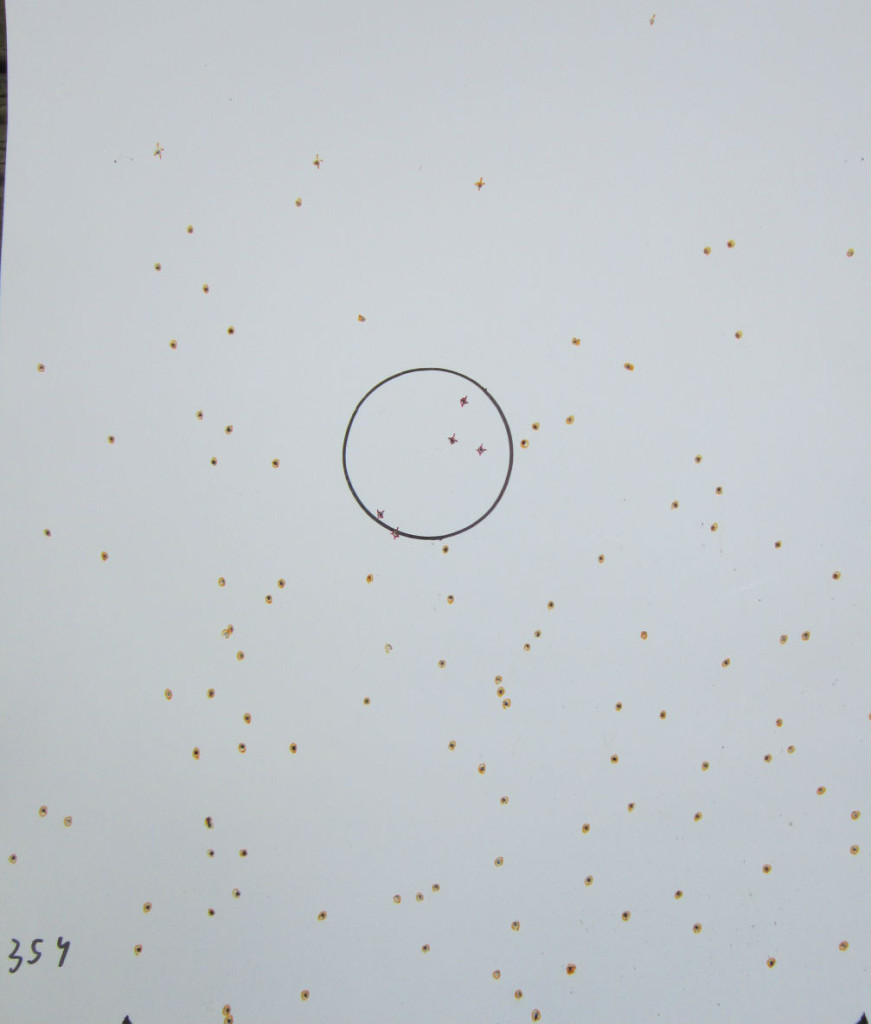In an earlier article, I wrote about how hunters who, like me, are on a painfully limited budget, can make do with the gear they have on hand and still have a good season afield. In that article, I mentioned that I would be fielding my 20-year-old 20 gauge Remington 870 this season for the first time in a few years.
In addition to thoroughly cleaning the gun, I thought it would be a worthwhile exercise to pattern the gun and, to the best of my ability, choose the optimal choke and load combination for my type of ruffed grouse hunting.
A brief explanation of choke, pattern, and shot size
In order for this article to make sense to the novice hunter, brief discussion of how choke and shot size relate to pattern and terminal performance is in order. More seasoned hunters may want to skip the next section.
Simply put, a shotgun’s choke is a section of the barrel near the muzzle where the bore tapers to a diameter smaller than that of the rest of the barrel. The choke compresses the shot column as is passes through the final few inches of the bore, thus creating a tighter shot spread or pattern. Depending on make and model, a shotgun’s choke will either be fixed and integral to the barrel, or it will be changeable via threaded metal tubes (called choke tubes) that are screwed into the muzzle.
The size of a pattern is proportional to the amount of constriction afforded by a particular choke. Chokes of the greatest constriction yield the tightest patterns. For example:
- A cylinder choke has no constriction under bore diameter and will generally place 40 percent of a shotshell’s pellets inside a 30-inch diameter circle at 40 yards.
- An improved cylinder choke is sized .010-inches under bore diameter and will place 50 percent of a shotshell’s pellets inside a 30-inch diameter circle at 40 yards.
- A modified choke is sized .020-inches under bore diameter and will place 60 percent of a shotshell’s pellets inside a 30-inch diameter circle at 40 yards.
- A full choke is sized .035-inches under bore diameter and will place 70 percent of a shotshell’s pellets inside a 30-inch diameter circle at 40 yards.
In an ideal world, the pellet strikes that comprise a shotgun pattern would be evenly distributed over a target. However, a variety of factors including pellet deformation as a result of compression during firing and inconsistencies in the physical makeup of guns and ammunition means that pattern distribution can vary widely and include gaps and flyaway pellets.
Typically, chokes that allow patterns to open quickly (such as cylinder or improved cylinder) are used when targets or game are expected to be encountered at close range, while chokes of tighter constriction are typically used for longer range work. A double barrel shotgun (either a side by side or over/under) offers an advantage where a hunter is likely to encounter targets at both close and long range in that one barrel can be equipped with an open choke and the other can be equipped with a tighter choke.
Equally important to selecting a choke appropriate to a particular hunting situation is selecting a load that contains a task-appropriate sized shot. The size of a pellet of birdshot is typically denoted by a number. The larger the number, the smaller the diameter and lower the weight of a pellet. For example, a #8 lead birdshot pellet will have a diameter of approximately .09-inches and will have a mass of approximately 1.09 grains depending upon alloy while a #1 pellet will have a diameter of .16-inches and an approximate mass of 5.99 grains. Larger birdshot sizes (those that skirt the line between birdshot and buckshot) are denoted with letters, B, BB, BBB, T, TT, F, and FF. These shot sizes are usually used by hunters after large, tough, waterfowl such as geese, or by hunters pursuing varmints and predators up to the size of a coyote.
The primary advantage of the smaller shot sizes is that the pellet count per total payload mass is high, allowing dense shot coverage of a target area. The disadvantage of smaller shot sizes is that each individual pellet looses energy (and hence its ability to effectively kill game) rapidly. A pattern of #8 pellets that downs a bird at 20 yards may only wound it at 35 yards. By contrast, a payload of large pellets will retain energy at greater distance than smaller shot, but the reduced pellet count means that patterns are sparser and may contain holes large enough for a game animal to slip through unharmed.
The ideal setup for deep woods grouse hunting
As a general rule, hunting situations in which most shots are taken at close range, fast moving, game call for a combination of some kind of open choke (cylinder, skeet, or improved cylinder) and a load of small shot (#9 through #6). Such a choke/shot combination will maximize a hunter’s chance of scoring a hit. Hunting situations in which shots will mostly be taken more distant quarry call for a tighter choke and a larger size shot.
While the above seems like a simple, black and white guideline by which to choose a choke/load combo, real world conditions complicate matters. For example, in the section of Maine woods where I hunt ruffed grouse, I encounter two drastically different shooting scenarios. The first involves a bird suddenly exploding from cover in a densely forested section of woods, startling me in the process. The second scenario involves birds spotted at longer range before they are aware of my presence. In the first scenario, an open choke and load of small shot is ideal while in the second scenario, a better combination is a more constricted choke paired with a load of larger shot.
Making do
While the acquisition of a double barrel shotgun would make me reasonably well-equipped for both scenarios, such a purchase simply isn’t in the cards this year and I have to make-do with what I already have: A Remington 870 in 20-gauge equipped with one skeet choke tube and one modified choke tube.
The skeet tube (which produces patterns slightly tighter than a cylinder choke) is ideal for close-in shots on flying grouse. In all honesty, flying grouse are usually perfectly safe from me regardless of what shotgun/choke/load combo I’m carrying. The reason for this is the manner in which ruffed grouse in the deep woods burst suddenly from cover in a flurry of thunderous wing beats is inevitably something of a shock every time it happens. By the time I have recovered enough from being startled to get a shot off, the bird has usually disappeared into thick, shot absorbing, brush. I do occasionally hit flying birds, but this usually more a function of luck than of skill or equipment.
Most of the grouse I bring home to the grill are those that fail to take to the air before I am able to spot them. While birds that hang around on the ground or perched in trees are far more likely to end up filleted and wrapped in bacon at the end of the day, they are also more likely to longer range shooting, sometimes at distances up to 40 yards (though I have shot them at distances of less than 10 yards).
With the above in mind, my modified choke seemed to be the obvious choice for the extended range shots I am likely to encounter, but what about load selection? Among the many full and partial boxes of 20-gauge birdshot loads in my gun closet was a full box of Remington 3-inch Nitro Magnums, each shell sporting 1-1/4 ounces of #4 shot. Per pellet energy at extended (though not extreme) ranges is more than enough to kill grouse or any other small game I might encounter, but before taking to the woods, I wanted to see exactly how the load patterned from my gun.
Pattern test
Firearm: Remington 870, 20 gauge, 28-inch barrel
Load: Remington Nitro Magnum, 1-1/4 ounce #4 shot
Taking to the range, I proceeded to pattern my gun with the above load at 15 yards, 25 yards, and 35 yards. The target used for each shot was a sheet of 22×28” poster board. The 4-inch circle at the center of each sheet was the point of aim. Results follow.
As expected, the pattern at 15 yards was very dense and of limited diameter (9 to 10-inches). A direct hit on a game animal at this distance could result in substantial meat damage. The small pattern size may reduce the likelihood of a hit on a flying bird.
The pattern at this distance was approximately 20-inches in diameter. While there are some holes in the pattern toward its edges, none of them look large enough for a grouse to slip through unscathed.
At 35 yards it appears the center of the pattern struck a little lower than I intended (shooter error). However, shot distribution, while not exactly dense, seems adequate to put a few pellets in a bird at this range.
The bottom line
It seems that for my type of grouse hunting (which is really just armed foraging) the above load through a modified choke will be more than adequate. While the load/choke combo is a handicap for close range shots on moving game, anything holding still at 35 yards or closer will be meat in the freezer.
(9362)








